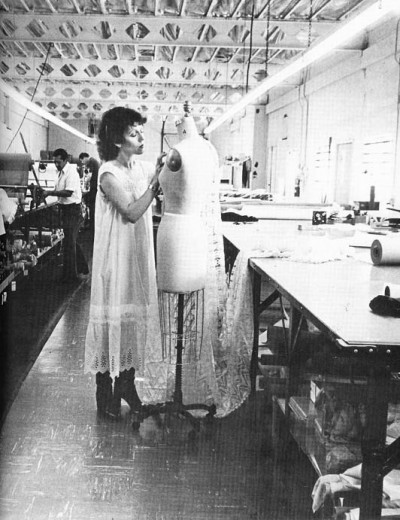
Holly Harp
About
Many students are torn between the glamor of stage or film design and high fashion. Holly Harp was able to merge both her love of costume and fashion into a successful professional career that lasted more than 25 years. Harp went with an early instinct after designing sandals on a whim, and returned to college with her sights set on becoming a designer. She studied in the theatre department and worked on her fashion degree. Her style was dramatic, feminine, and refined.
Holly Harp was born in Buffalo, New York, in 1939. She studied art and costume design at North Texas State University. She married twice, first to Jim Harp. She has a son Tommy.
When a designer's devotees include Barbra Streisand and Courtney Love, you know she has range. Such was the case with Holly Harp, a fashion-loving flower child who set up a boutique on Sunset Boulevard in 1968. It became the pinnacle of Los Angeles fashion.
Holly captivated Hollywood with a rich hippie look in the 60's right up to the early 90's. She was twice nominated for the Coty awards.
She died of cancer in 1995 at the age of 55. This year a retrospective exhibition of her work was held, comprising of dresses from her house model Ann Hoover, and Pam Paul, her very first customer. Dresses have also come from Julie Belafonte, one of her biggest fans. Her first husband Jim Harp has collaborated in setting up the exhibition.
Holly Harp created costumes for films such as "Cabaret", "Sleeper" and "The Turning Point".
Even though she has gone, her beautiful dresses live on and give pleasure to so many women who wear them, and people who see them.
The Look
Harp moved to the West Coast during the height of hippiedom in 1966. San Francisco hippies tended to borrow street styles and recycle clothing salvaged from the local Goodwill, while Los Angeles, where Harp set up shop, was more interested in marketing styles and trends in the form of new designs. The latter was more of a "rich hippie" look. Harp was inspired by the youthful street fashions and was referred to by the Los Angeles Times as the city's "doyenne of feathers and fringe." Harp's clothes suited the tastes of the youthful population who loved psychedelic colors and melodramatic effects. It was more than being in the right place at the right time. Harp began to distill her designs into her own personal expression. During the 1970s there was more emphasis on the body. The soft matte jersey Harp experimented with became a signature fabric along with chiffon. There was a continuation of using beadwork, flowers, feathers, and airbrushed designs but with a softer, refined touch. Harp used complicated draping techniques to emphasize feminine qualities rather than the prevailing minimal approach. Harp became known for making fabulous dresses that attracted the attention of the Hollywood élite. The ability to create clothing with both romantic and classic qualities carried Harp through the 1980s into the 1990s; by limiting her production and not overextending herself, Harp maintained the integrity of her designs.
Who Wears It
Goldy Hawn, Diana Ross, Angelica Huston, Liza Minelli, Jane Seymour, Lauren Hutton, Bette Midler, Jane Pauley, Sally Field, Ryan O'Neal, Jon Voight, and Jack Nicholson, Mary-Kate Olsen